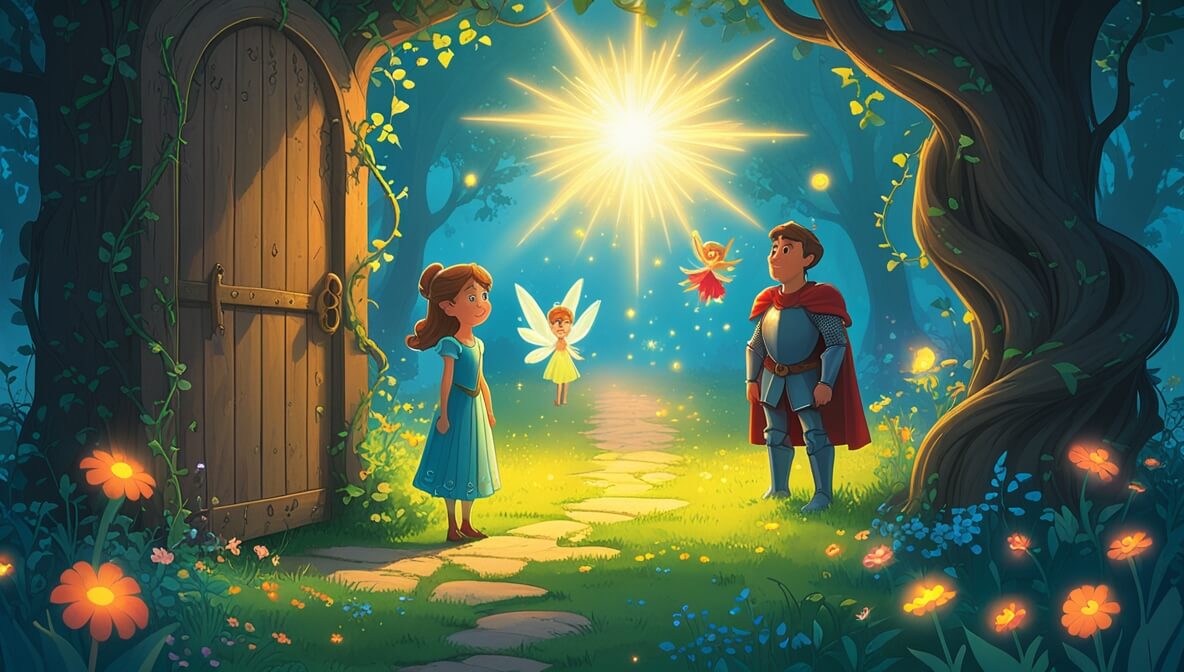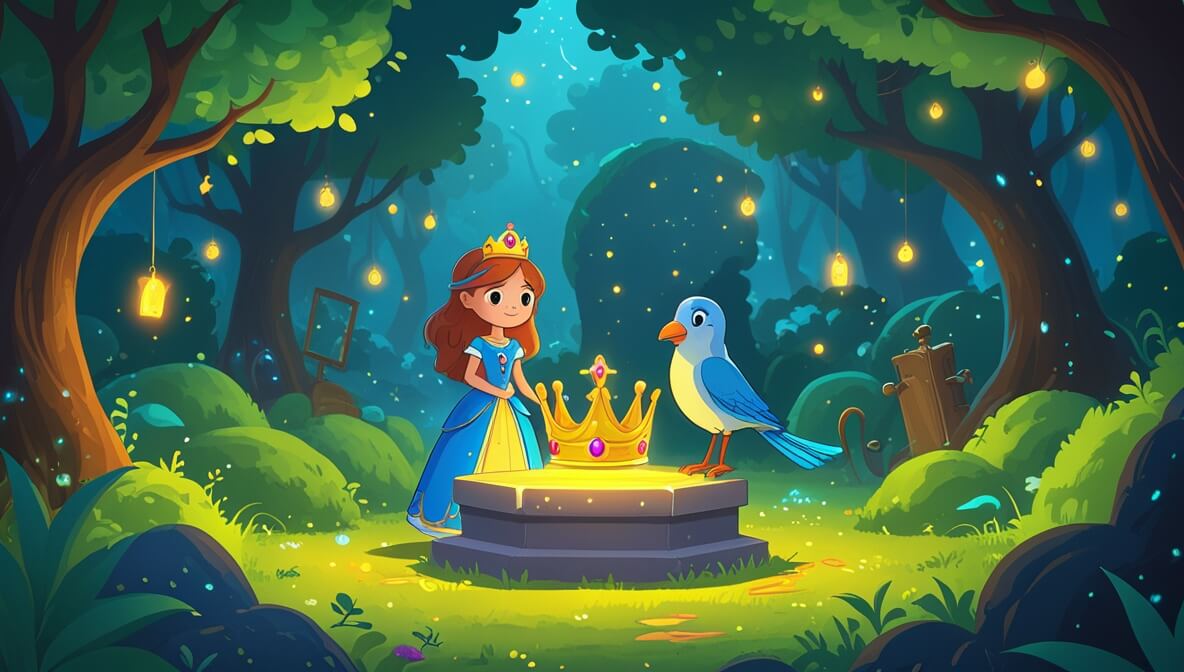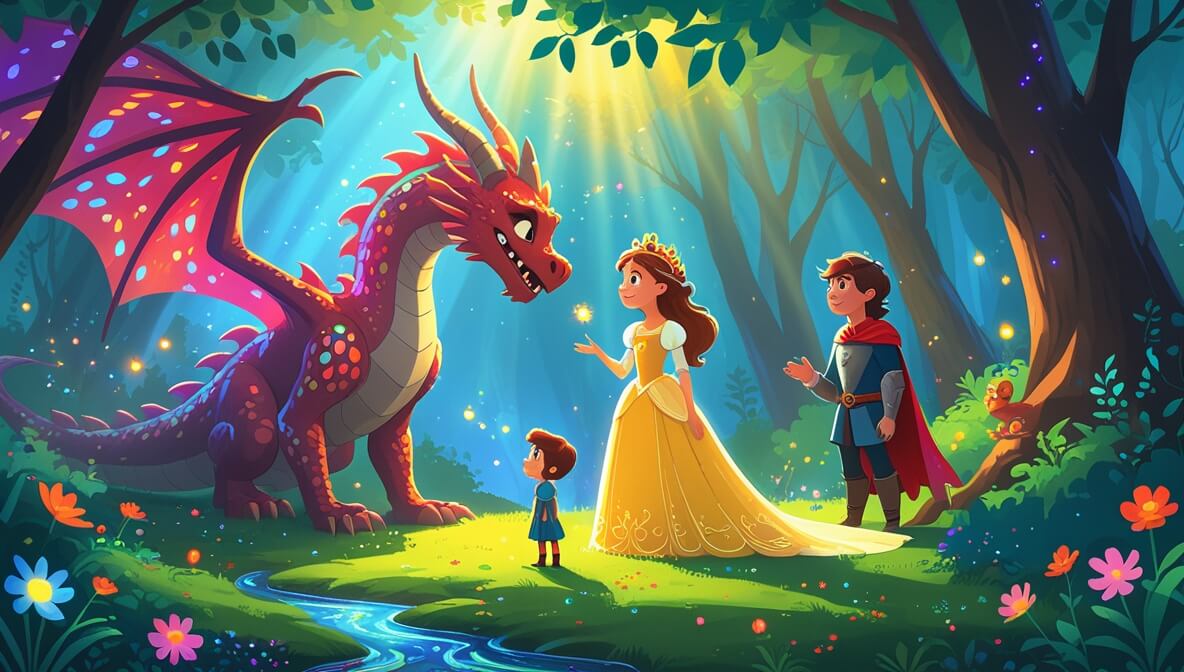A little bear named Nibbles learns the importance of bedtime routines and the magic that comes when night falls.
Age Recommendation
0 – 4 years
Characters
Characters:
- Nibbles (a curious little bear)
- Moonbeam (a friendly moon fairy)
Story
Once upon a time, in a cozy forest, there lived a little bear named Nibbles. Nibbles loved to play all day long, but when night came, he felt a bit scared and didn’t want to go to bed. His favorite time was just before bedtime, when the stars began to twinkle in the sky.
The Moon’s Gentle Glow
One night, as Nibbles peeked out from his window, he saw a soft, shimmering light. It was Moonbeam, a friendly moon fairy, who whispered, “Nibbles, bedtime is magical!” Nibbles was curious and asked, “Why is it magical?”
Stars and Dreams
Moonbeam gently floated down and said, “When you close your eyes, the stars sprinkle dreams just for you.” Nibbles wondered what kind of dreams the stars would send him, and he felt a little excited.
A Cozy Bedtime
Moonbeam then sprinkled a little stardust around Nibbles’ cozy bed and said, “Bedtime is when the forest whispers ‘goodnight’ and the world becomes peaceful.” Nibbles felt a warm feeling inside and smiled.
Snuggle and Sleep
With a big yawn, Nibbles cuddled up under his blanket. The stars twinkled brightly, and Moonbeam whispered, “Sweet dreams, Nibbles.” And with that, Nibbles closed his eyes, ready to explore the magical dreams awaiting him.
The end.
Moral of the Story
Bedtime routines can be comforting, and letting go of fears can lead to magical dreams and peaceful sleep.
Questions to Think About
- Why do you think Nibbles was scared of bedtime?
- How did Moonbeam help Nibbles feel better?
- What do you think dreams are made of?
- How can bedtime be a magical time for you?
- Why is it important to have a bedtime routine?
Do You Know
- The moon is a natural satellite that orbits Earth, and it doesn’t make its own light. It shines because it reflects light from the sun!
Word Explorer
- Shimmering: Sparkling or glowing with light.
- Whispered: Spoke in a very soft and quiet voice.
- Cuddle: To hold someone close in your arms to show love or for comfort.
Emotions in the Story
- Curiosity: When Nibbles wanted to know more about the magical bedtime.
- Excitement: When Nibbles thought about the dreams the stars might bring.
- Calmness: When Moonbeam’s stardust made Nibbles feel peaceful and ready for sleep.
Color Your Scene
Imagine Nibbles snuggled in his bed, with Moonbeam sprinkling silver stardust all around. Draw the night sky with bright twinkling stars and a glowing moon. Use colors like blue for the night sky, silver for the stardust, and golden yellow for Moonbeam’s glow.
Parents’ Corner
This story is a wonderful way to introduce the importance of a calming bedtime routine. Discuss with your child how setting a regular bedtime can make nights feel safe and magical. Encourage them to share their bedtime thoughts and use this time for cuddles and reassurance. Highlight how letting go of fears can open the door to beautiful dreams, and explore ways to make bedtime a peaceful and enjoyable part of the day.











